Last Saturday, I set out for nearby Banff to do some more winter photography. I was accompanied by Stewart Hamilton and I must say we were not initially optimistic about our prospects for a great day. It was cold, about -20 deg C (-4 deg F ) and overcast. However getting out is better than staying inside, so we left with tempered expectations to take some shots of Bow Falls in Banff.
The Bow Falls, as their name would suggest is a waterfall in the course of the Bow River. It’s not high, 9.1 metres (30 ft) but it’s the full width of the river, 30 metres (100 ft) and carries the full volume of the Bow. It’s impressive, particularly in spring and so we were chagrined to find it was almost completely frozen, this chilly month of February.
As you can see from the photograph, water continues to flow beneath the thick mantle of ice. It’s impossible to barricade all that water!
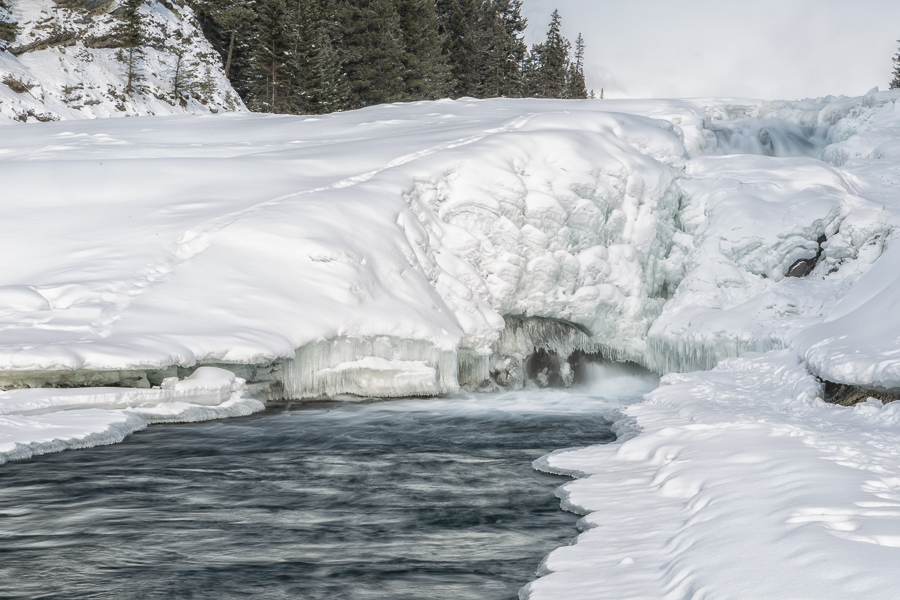
Moving in more closely, I was able to get this close-up of the water emerging. It’s quite turbulent, channeled through this relatively small opening. There’s a lot of splashing going on and when the water comes into contact with the snow and ice above, it quickly freezes, forming a fringe of icicles along the margin.
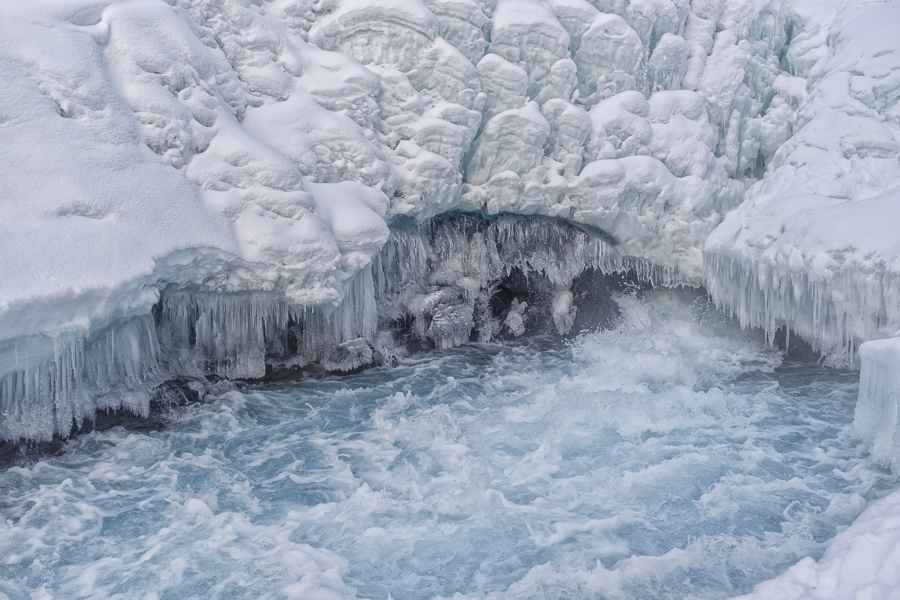
As the channel widens, its flow spreads out. As it does, it slows and begins to freeze once again on the surface. At this point, the water again drops below the frozen surface continuing its inexorable, downstream momentum.
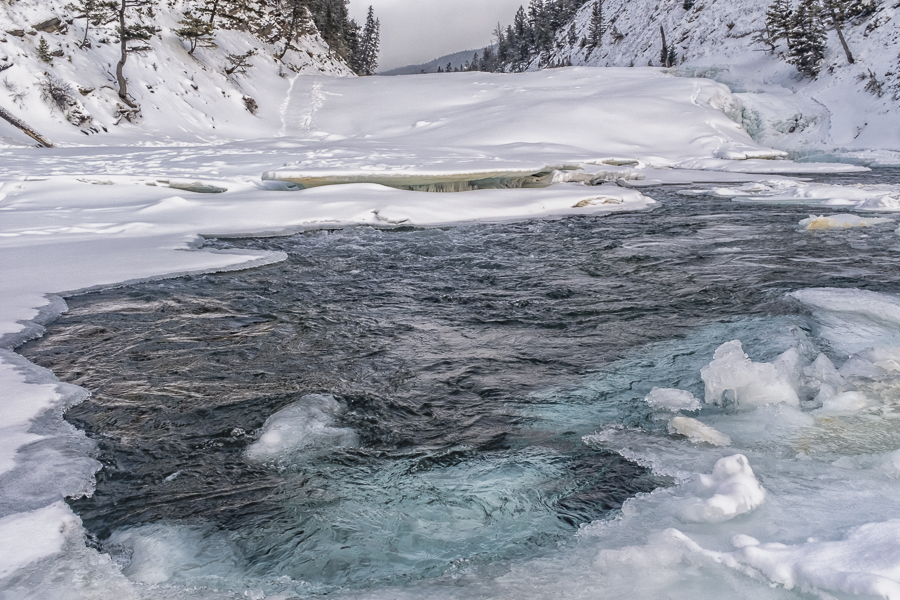
Enough about hydraulics. By this time, we were pleasantly surprised to see the sun begin to emerge from behind the clouds. We elected to make a stop at the ever popular Vermilion Lakes, just outside Banff on the way home.
I took this next photograph from the roadside along the north side of the lakes. With the cleared skies I was able to capture Sulphur Mountain and Mount Rundle on the opposite side.
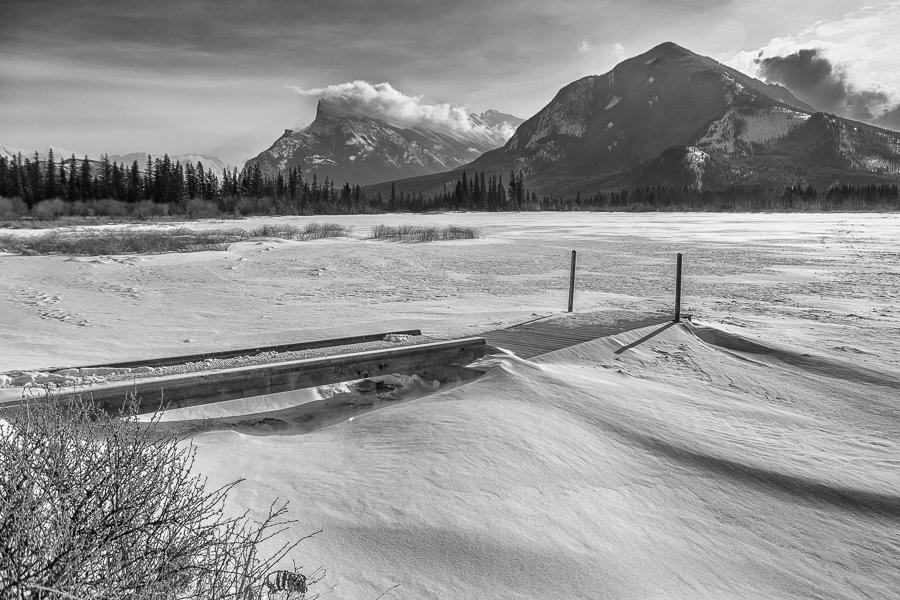
Reversing the camera to the opposite direction, I took a similar picture looking westward. This scene features a comfortable bench (in summer), some open water and the majestic Massive Range of mountains in the background.
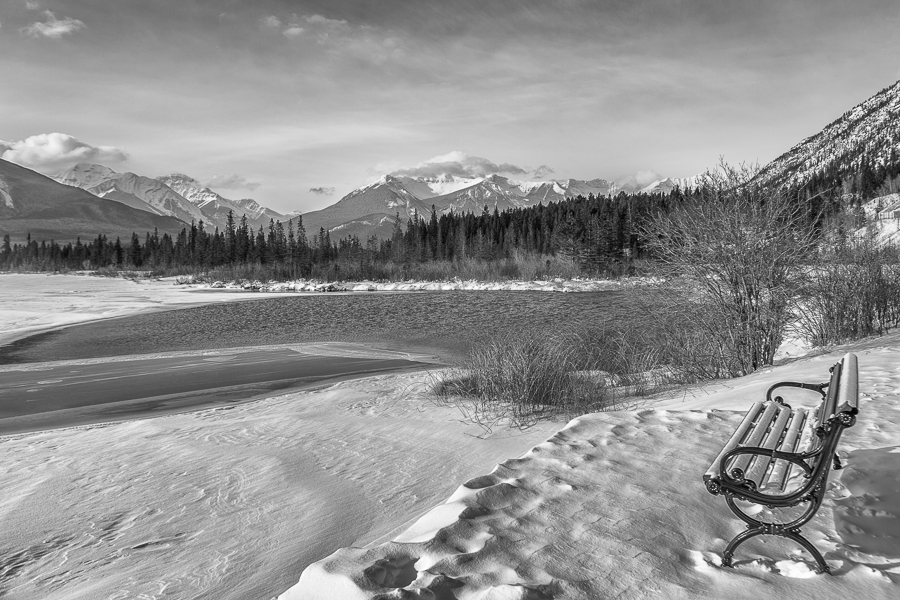
Some scenes work better in monochrome and I think these last two fall in that category. I find that black and white conveys very well the sense of winter in these cold, windswept landscapes.
There is some colour and with a little persuasion it can be drawn out as you can see in this view of the Vermilion Lakes’ shoreline.
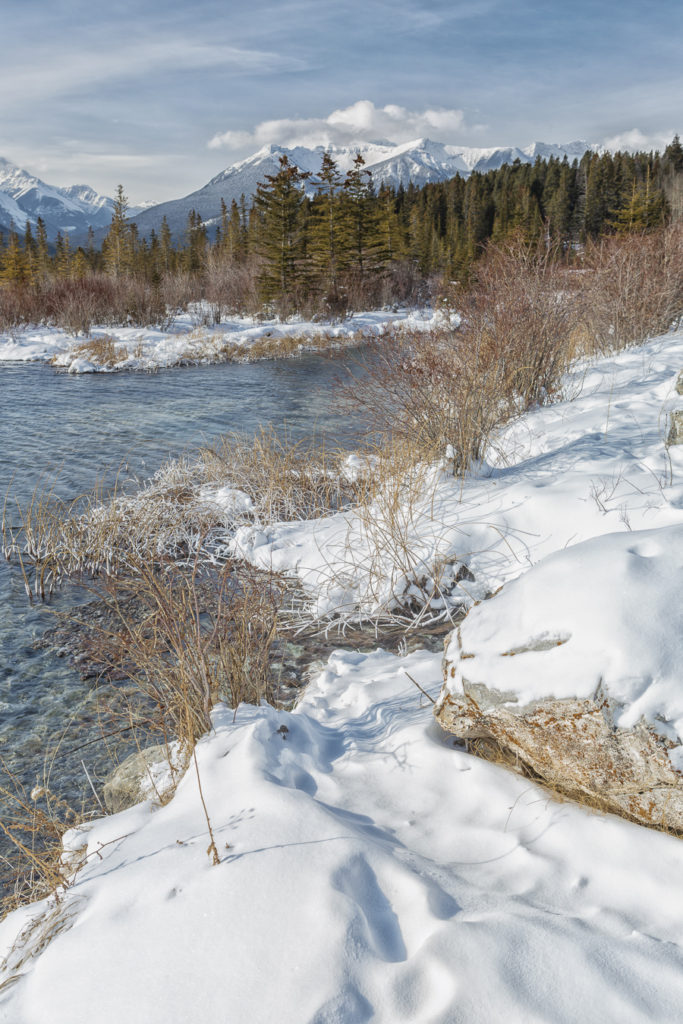
For today’s last picture, I’ve included a small inlet off the main lake. I’m always impressed by the hardy breed of reeds and shrubs growing along the lakes. They fare well all year round and provide a nice of splash of colour against the snow.
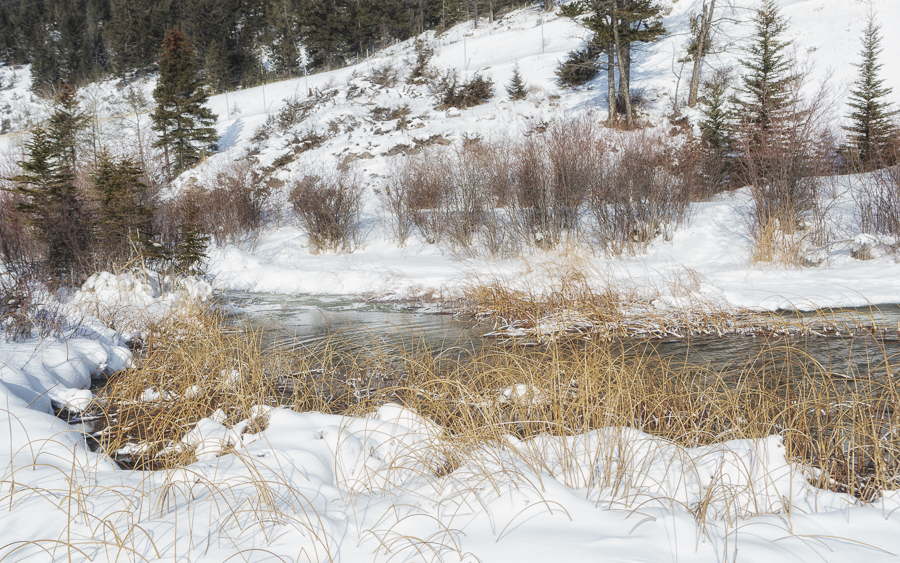
It proved to be a much better day than we anticipated. Without the clearing skies, we would have likely gone home without our stop at the Vermilion Lakes. As it turns out we were very pleased with the day’s photographs.

These are very well-done images, Peter. I particularly like the monochromes. As you point out, monochrome emphasizes the ‘winteriness.’
Beautiful photos Peter. Makes me homesick
Glad you ventured out on such a cold day…photos are beautiful!
Helen
Hi Peter
The pictures are fantastic, I would also be VERY pleased to capture the beauty you did. Each one tells a different story of it’s surrounding. Thanks for sharing.
Hi to Rolande
Karey
Beautiful photos Peter. I am very impressed with your composition. I can see tHat the monochrome shots do create a feeling of the cold
Looks freakin’ cold..but gorgeous photos. You’ll be doing desert photos soon:-)